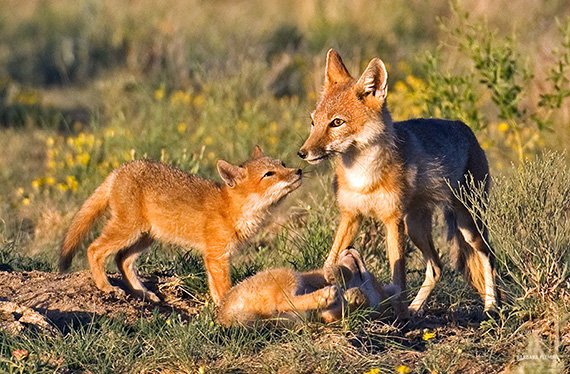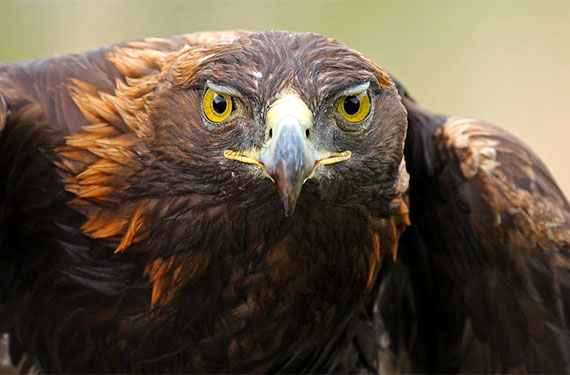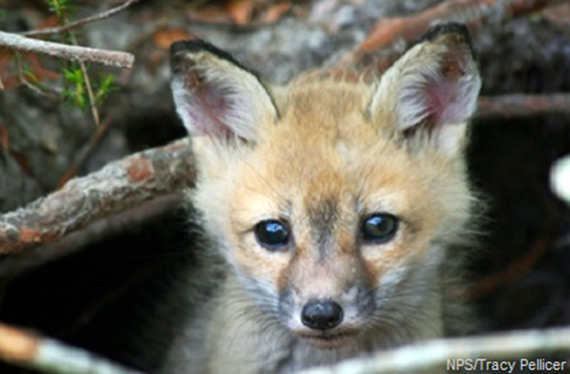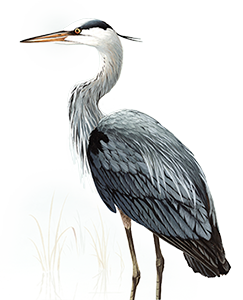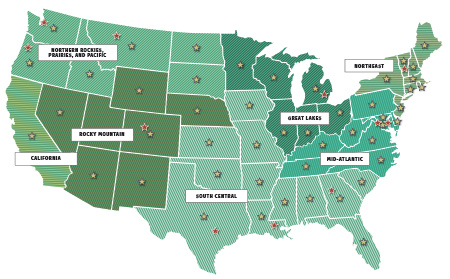From majestic mammals like bison and grizzly bears to tiny desert wildflowers, America harbors a remarkable array of plant and animal species.
Unfortunately many of our species have not fared well over the past few decades, suffering from threats such as habitat loss and the spread of invasive species.
Scientists estimate that up to one-third of U.S. species are at increased risk of extinction, and more than 1,600 U.S. plants and animals already have been federally listed as threatened or endangered and protected under the Endangered Species Act.
The National Wildlife Federation has long has been focused on protecting the most vulnerable of our wild species.
Recovering America's Wildlife Act
Scientists estimate that one third of all U.S. wildlife species are already imperiled or are vulnerable. Habitat loss, invasive species, and severe weather have all taken a severe toll on birds, mammals, fish, amphibians, reptiles, butterflies, and bees. All types of wildlife are declining—in many cases dramatically. We need urgent action to protect vulnerable wildlife. The Recovering America’s Wildlife Act is the solution we need.
Our Approach
The National Wildlife Federation works to defend, strengthen, fund, and ensure effective implementation of the Endangered Species Act and other core wildlife protection laws.
- Defending and strengthening the Endangered Species Act, which provides an essential legal safety net to prevent the loss of plant and animal species to extinction.
- Holding federal agencies and others accountable for complying with laws protecting rare and endangered species using cooperation, persuasion, and—where necessary—litigation.
- Advocating for increased funding for federal and state conservation programs that benefit endangered species.
- Protecting, restoring, and connecting the habitats on which endangered species and other wildlife depend for their survival, and encouraging wildlife-friendly land management practices.
- Reducing threats to wildlife that can lead to their endangerment and extinction, such as loss of habitat, contamination of water and spread of invasive species.
State Wildlife Action Plans
One of the best ways to protect endangered species is to prevent their decline and deterioration in the first place. Toward that end, National Wildlife Federation works to maintain healthy populations of fish, wildlife, and plant species through promoting broad-based conservation efforts such as State Wildlife Action Plans. National Wildlife Federation is advocating for passage of the Recovering America’s Wildlife Act, which is a bold new approach for providing the funding needed to carry out these proactive conservation plans.
Climate Change
Climate change is making the protection of endangered species increasingly challenging. Climate change not only affects our plants and animals directly—through changes in temperature and precipitation for instance—but can worsen the impact on endangered species of traditional threats, such as invasive species, wildfires and diseases.
The National Wildlife Federation is playing a leadership role in developing and promoting innovative approaches for climate-smart conservation that can safeguard endangered species and other wildlife in the face of a changing climate.
